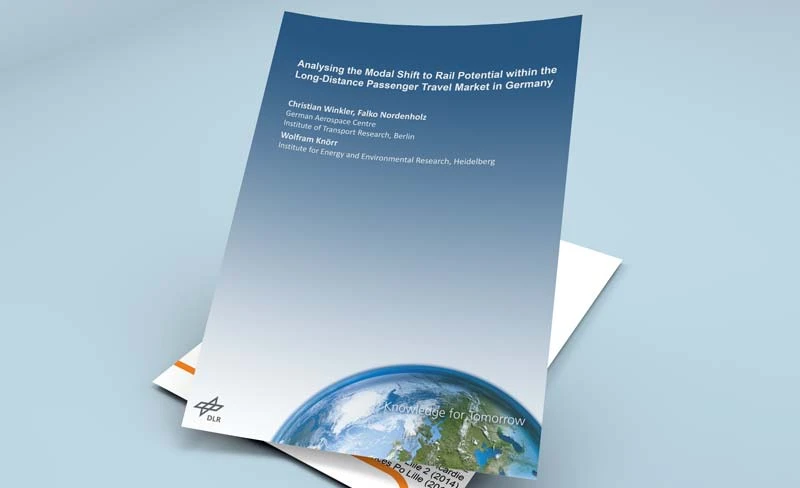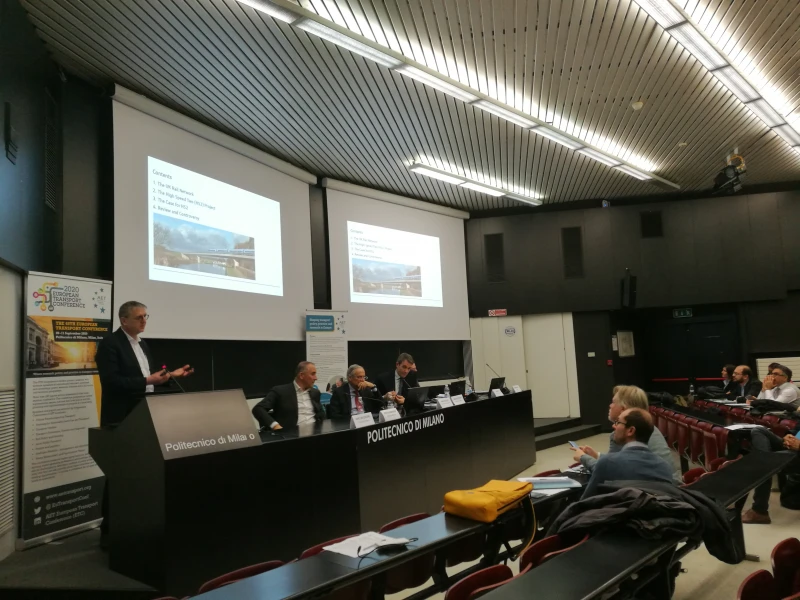-
Past ETC Papers

Browse, search and view papers from the past AET Conferences.
-
Members' Area

AET promotes networking and exchange of ideas, information and opportunities amongst members.
Conference Papers 2007
Noordwijkerhout, Netherlands
ETC Conference Papers 2007
A new approach to modelling variability in traffic queues
Seminar
Day 1 (17 Oct 2007), Congestion, Empirical Evidence on Congestion, 11:00 - 13:00
Status
Accepted, awaiting documents
Authors
N B Taylor, TRL, UK
Short abstract
A new formula for the time-dependent variance of a queue, derived from well-known probability distributions, offers a way to predict the variability of traffic delays as well as improving the accuracy of close-form queue models.
Abstract
As demand for travel increases, providing for it fully in infrastructure is considered both impractical and environmentally harmful. Emphasis is shifting from new building to maximising performance of existing facilities. Indeed, congestion is often seen less as evidence of failure of a transport system than evidence of its utility for travellers, who are prepared to bear the cost in order to acquire a benefit. Reliability, or predictability of journey times, is thought to be achievable at relatively low cost, by managing the network more effectively.
Congestion commonly results from transient excess of demand over capacity. Queues arise not only from bottlenecks and unpredictable incidents, but also random sources whose statistics are theoretically predictable. Queues usually develop at junctions and points where capacity is constricted. Observations confirm that they can exhibit large day-to-day variation. The classic probabilistic queues are the M/M/1 and M/D/1: Markovian (random) or Deterministic (uniform) arrivals and service with one server.
The effect of randomness on mean queues can be included in time-dependent closed form models, but these do not describe variability. Empirical relationships relating queue variance to peak shape have been derived by calibrating from simulation, but cannot deal with all possible peak shapes. This paper develops a more general time-dependent formula for queue variance, which not only enables a profile of variance to be calculated, but can also reveal errors in the mean queue model. It is hoped to lead to a model which is both accurate and incorporates useful information about the queue size probability distribution at all stages.
The ?sheared? queue is a closed-form time-dependent model derived by equating two kinds of basic queue model. The ?deterministic? queue is an initial queue, plus the difference between average arrival and departure rates multiplied by time. The ?equilibrium? queue arises from randomness in arrivals and service, given by the Pollaczek-Khintchine formula, which expresses queue size as a function of the utilisation or degree of saturation at the stop line. While not explicitly time-dependent, this can depend on time implicitly through the utilisation. If a constant demand is below capacity the queue size tends to a constant equilibrium value.
The shearing transformation combines these models into a single time-dependent function applicable to demand both below and above capacity, which can be called quasi-equilibrium, since it equates the deterministic queue to a formula which strictly applies only in a steady state. Because the model uses average demand and capacity, variable values have to be approximated in a sequence of time slices, but by choosing these appropriately, arbitrary profiles can be modelled, and many traffic models use this approach.
The development of M/M/1 and M/D/1 queuing processes can be studied from the known differential or recurrence relationships between their individual queue size probabilities. These can be simulated numerically to give an accurate benchmark for testing closed-form models. By algebraic calculation of moments of the distributions, several formulae and statistics can be derived. These include the familiar deterministic and equilibrium queue formulae, but also a formula for time-dependent variance. This has a structure resembling that of the deterministic queue, an initial value, plus the difference between the time-average of queue size and the equilibrium queue size multiplied by time. However, even moderate inaccuracies in the mean queue model can cause the predicted variance after a period of time or at equilibrium to be wildly inaccurate.
This inaccuracy can be traced to various causes, but the root causes are the quasi-equilibrium assumption in the queue model, and the absence of parameters characterising the initial probability distribution. Algebraic correction, employing the characteristic relaxation time scale of the queue, can produce correct asymptotic behaviour in a growing queue model. For a decaying queue, a completely new model based on exponential functions gives better results, the time constants of these functions being directly dependent on the initial utilisation, mean and variance of the queue.
The improved model is able to predict the development of mean queue size and variance for arbitrary time-sliced demand profiles. Although the sheared queue formula is necessarily approximate, it has some desirable properties so is worth retaining as far possible. Work remains to be done, because the effect of initial utilisation is not embodied in the queue growth model. As with queue decay, an exponential relaxation process may work, but acting on a much shorter time scale. For the model as a whole, simplicity and computational efficiency are as important criteria as accuracy, to ensure it is practical to incorporate it in existing traffic models.
Documents:
No documents yet.
Association For
European Transport
Forester House
Doctors Lane
Henley-in-Arden
Warwickshire, UK
B95 5AW
+44 (0) 15 64 793552
VAT number: 710 1866 64
Conference Supporters & Endorsers




Legal Entity
The Association for European Transport is registered as an Association ('vereniging') with the Chamber of Commerce for Haaglanden in The Netherlands under company number 27170096.
Built on Zenario




